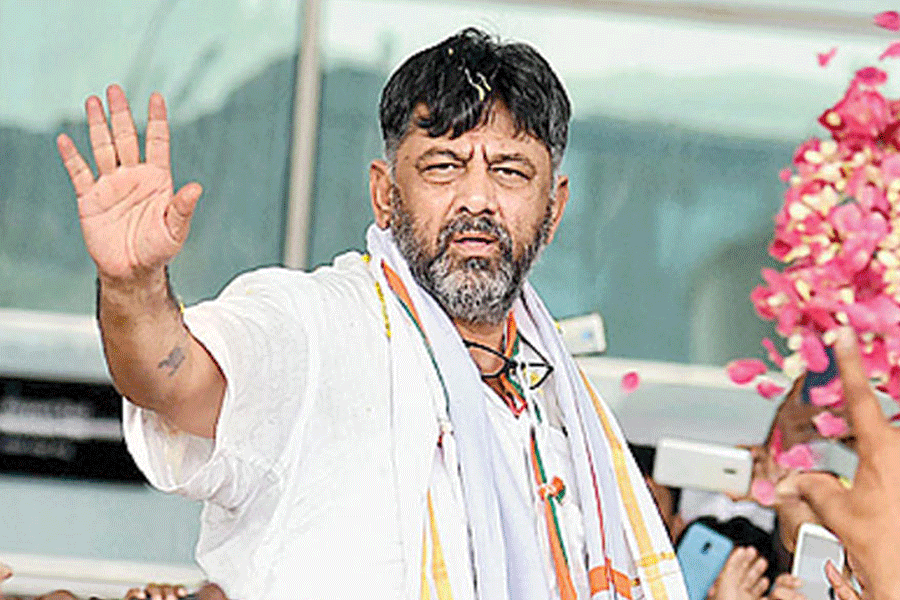Strength, virility and bravado must be in full display in a heterosexual cisgender man. Less than that is ignominy for him in popular culture and in real life. It is okay to be lustful and violent, but not alright to be gentle and compassionate. Within this aggressive, libidinous and heteronormative iconography, Monami Nandy’s visceral work, To Be a Man (picture, left), questions the place of men who don’t fit into the ‘norm’. Through various lenses, it attempts to look at men who are invisibilised and tormented for being non-conforming, queer, non-binary, or simply, ‘less-than-masculine’.
In the intimacy of the Urban Theatre Project space recently, the piece provoked, alarmed, triggered, disturbed and played games with one’s emotional well-being, sometimes making it difficult to breathe. Everything in it — personal trauma, a fractured sense of selfhood, and the stultifying desperation of the one Othered by the majority with impunity — argued for an individual’s fundamental right to be who he or she is. The movements shifted from measured and fluid classical ones to disrupted patterns of disquieting torture, layered with meta-theatrical gestures. The dance
that developed was intense and compelling. Nandy worked with her collaborators — the dancers, Pintu Das, Sangram Mukhopadhyay, Amitabh Srivastava and Asish Singha, the light designer, Saheb Sanyal, and beatboxers Ishan and Rajit Chowdhury — through a process that clearly involved deep listening, empathy and collective growth. The overriding feeling that one emerged with — the emotion was indeed that of having been in a dark tunnel — was one of tenderness and care.
The lofty century-old staircase of the Royal Insurance Building in BBD Bagh, with its tired but seeing walls, elegant arches and high ceiling, recently became an extraordinary space for a dance experiment titled Reclaim (picture, right), conceived by Paramita Saha. The low rumble of the double bass played by Debjit Mahalanobis was at the centre of the performance — literally and figuratively — as the twin staircases at whose head he was positioned became the stage for the performance. Echoing through the centre of the imposing Edwardian building colonised by dance, the soundscape merged with the stillness of the space to tell stories about connections. The dancers underscored the power of the collective as they courageously navigated the staircase, holding on to one another supportively while interacting with its structural design and history, playing with its moods and memories, and writing the history of a present that the architecture had left untold. Artsforward’s effort was a powerful iteration of engagement with heritage and of how movement art can be created in spaces not traditionally associated with it.
![A moment from Reclaim [Source_ Kathakali Jana]](https://assets.telegraphindia.com/telegraph/2025/Jun/1749869725_a-moment-from-reclaim-source_-kathakali-jana.jpg)
A moment from Reclaim [Source_ Kathakali Jana]
In its recent presentation, Decoding Sapphire, as a part of the Sapphire Annual Gala at Gyan Manch, the dance company traced its choreographic work of 32 years in a montage of excerpts recreated through the dancing bodies of today. If choreographer Sudarshan Chakraborty met with boundaries in the process, he surely overcame them to bring forth a vibrant celebration of the encounters between the past and present. If the 1996 work, Alien Flower, had positioned bodies as a site of protest against homophobia, its re-imagination in a society that has since decriminalised homosexuality is fundamentally different. In the diverse explorations of themes such as consumerism, sustainability, elements of pure dance, Indian erotica or the treatment of Tagore songs, the pieces reappear in more spectacular ways than before, visually playing out the company’s archives in the light of the present.











